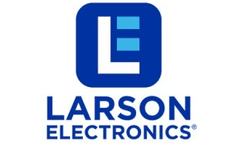Solar Cells Technology Articles & Analysis
11 articles found
The application of this material in solar cell technology has been extensively studied and has shown promising results. ...
Solar thermal power is a technology that converts light energy into heat energy and then generates electricity by doing work through a conventional thermal cycle.Solar thermal power is a technology that converts light energy into heat energy and then generates electricity by doing work through a conventional thermal cycle.Solar thermal power ...
Now that solar energy has a larger share in our energy supply, it is becoming more important that solar panels are reliable and behave predictable. To be able to predict when solar panels will fail, insight into the failure mechanism is essential. This knowledge is used to improve the quality and longevity. Scientists at TNO Energy Transition and Solliance Solar Research have developed a ...
Cadmium Telluride Solar Cell A CdTe cell is an interesting technology that uses cadmium telluride as its semiconductor. ...
See what's new with solar panels and where the solar cell technology is going. New Solar Panel Developments In traditional solar panels, silicon acts as a semiconductor. ...
Solar cells, also known as photovoltaic cells, are the tools to carry out this conversion. ...
Second Law of Thermodynamics The main culprit responsible for the inefficiency of solar cells lies in the second law of thermodynamics. Carnot’s theorem, which was developed by Nicolas Léonard Sadi Carnot in 1824, suggests that this law is the reason why it impossible to create a fully efficient solar cell. ...
Second Law of Thermodynamics The main culprit responsible for the inefficiency of solar cells lies in the second law of thermodynamics. Carnot’s theorem, which was developed by Nicolas Léonard Sadi Carnot in 1824, suggests that this law is the reason why it impossible to create a fully efficient solar cell. ...
The EPFL researchers have managed to merge antennas and solar cells in a mixed device that promises unprecedented efficiency. ...
Beginning with an AUD$0.424 Billion, 154MW phase in Australia, this project aim to deploy at least 1GW of power stations technology across Australia, China and the United States, all producing power for less than 1/6th the cost of current solar power. The technology includes solar concentrator technology ...
Photovoltaics, which directly convert sunlight into electricity, include both traditional, polysilicon-based solar cell technologies and new thin-film technologies. Thin-film manufacturing involves depositing extremely thin layers of photosensitive materials on glass, metal, or plastics. ...








